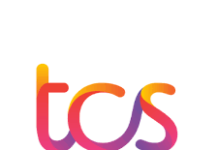Feasibility study its outcomes and types:
A feasibility study is the measure of the software product in terms of how beneficial product development will be for the organization.
The outcome of feasibility study:
1. The feasibility study decides whether the proposed system is worthwhile or not.
2. The implementation of the feasibility study is based on tile information) assessment, information collection, and report writing.
3. After performing the feasibility study a feasibility study report is prepared.
4. The outcome of the feasibility study contains adequate comments and recommendations for management about whether or not the project should be undertaken.
There are five types of feasibility study.
Implicit or explicit effects of feasibility study on software requirement collection
- The feasibility study helps in understanding the requirements of the system.
- The feasibility study affects the software requirement collection both implicitly (expected characteristics) and explicitly (unexpected characteristics).
Various types of feasibility study:
1. Technical:
- This assessment focuses on the technical resources available to the organization.
- It helps organizations determine whether the technical team is capable of converting the ideas into working systems.
- It also involves the evaluation of the hardware, software, and other technical requirements of the proposed system.
2. Operational:
- Operational feasibility analysis and determine whether the organization’s needs can be met by completing the project.
- It also examines how a project plan satisfies the requirements identified in the requirements analysis phase.
3. Economic:
- In economic feasibility, the cost and benefit of the project are analyzed.
- A detailed analysis is carrying out helping to determine the viability, cost, and benefits associated with a project.
- It includes all required costs for final development like hardware and software resources required, design and development cost and operational cost, and so on.
4. Legal:
- In legal feasibility, the project is analyze from a legal point of view.
- This includes analyzing barriers to the legal implementation of the project, data protection acts or social media laws, project certificate, license, copyright, etc.
5. Schedule:
- In schedule feasibility, mainly timelines/deadlines are analyzed for the proposed project.
- It states how much time the team will take to complete the final project.
Read more about TCP header


![study.]jjdshj feasibilty study](http://mechomotive.com/wp-content/uploads/2021/07/study.jjdshj-696x494.png)


